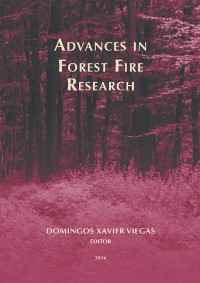Please use this identifier to cite or link to this item:
https://hdl.handle.net/10316.2/34195| DC Field | Value | Language |
|---|---|---|
| dc.contributor.author | Halabi, Amira El | |
| dc.contributor.author | Mitri, George | |
| dc.contributor.author | Jazi, Mireille | |
| dc.date.accessioned | 2014-10-22T14:06:34Z | |
| dc.date.accessioned | 2020-09-09T21:30:57Z | - |
| dc.date.available | 2014-10-22T14:06:34Z | |
| dc.date.available | 2020-09-09T21:30:57Z | - |
| dc.date.issued | 2014 | - |
| dc.identifier.isbn | 978-989-26-0884-6 (PDF) | |
| dc.identifier.uri | https://hdl.handle.net/10316.2/34195 | - |
| dc.description.abstract | Forest fires represent a major threat to Lebanon’s forests. More precisely, Pinus brutia forests, which occupy relatively large areas in Lebanon, are affected by frequent fire events. Lebanon’s National Strategy for forest fire management highlighted the need to facilitate natural forest regeneration and undertake reforestation activities in areas where regeneration is not possible. Accordingly, this study aimed at assessing post-fire regeneration of Pinus brutia in the Mediterranean region of North Lebanon. A total of 540 samples of 1x1m² were collected on 18 different sites affected by fires throughout the past 20 years. The density of seedling regeneration was calculated for each plot. The highest regeneration density (10.33 seedlings/m²) was observed on plots that were sampled one year after fire. The regeneration density decreased by 68% on plots sampled four years after fire when compared to plots sampled one year after fire. Also, the plots that were sampled five years after fire showed a 93.8% decrease in regeneration density. This continuous could be attributed to a high mortality rate due to prevailing severe weather conditions and human disturbances. The results highlighted the need to implement efficient post-fire management measures within the first four years after a fire event to decrease the mortality rate of young pine seedlings and to assist in the successful recovery of fire affected sites. | eng |
| dc.language.iso | eng | - |
| dc.publisher | Imprensa da Universidade de Coimbra | por |
| dc.relation.ispartof | http://hdl.handle.net/10316.2/34013 | por |
| dc.rights | open access | - |
| dc.subject | forest fires | eng |
| dc.subject | post-fire natural regeneration | eng |
| dc.subject | Pinus brutia | eng |
| dc.title | Monitoring post-fire forest regeneration of Pinus brutia in North Lebanon | por |
| dc.type | bookPart | por |
| uc.publication.firstPage | 564 | - |
| uc.publication.lastPage | 568 | - |
| uc.publication.location | Coimbra | por |
| dc.identifier.doi | 10.14195/978-989-26-0884-6_64 | - |
| uc.publication.section | Chapter 2 - Fire Ecology | por |
| uc.publication.digCollection | PB | por |
| uc.publication.orderno | 64 | - |
| uc.publication.area | Ciências da Engenharia e Tecnologias | por |
| uc.publication.bookTitle | Advances in forest fire research | - |
| uc.publication.manifest | https://dl.uc.pt/json/iiif/10316.2/34195/211147/manifest?manifest=/json/iiif/10316.2/34195/211147/manifest | - |
| uc.publication.thumbnail | https://dl.uc.pt/retrieve/11170595 | - |
| uc.publication.parentItemId | 53868 | - |
| uc.itemId | 70226 | - |
| item.fulltext | With Fulltext | - |
| item.grantfulltext | open | - |
| Appears in Collections: | Advances in forest fire research | |
Files in This Item:
| File | Description | Size | Format | |
|---|---|---|---|---|
| 978-989-26-0884-6_64.pdf | 1.83 MB | Adobe PDF |  |
Items in DSpace are protected by copyright, with all rights reserved, unless otherwise indicated.
